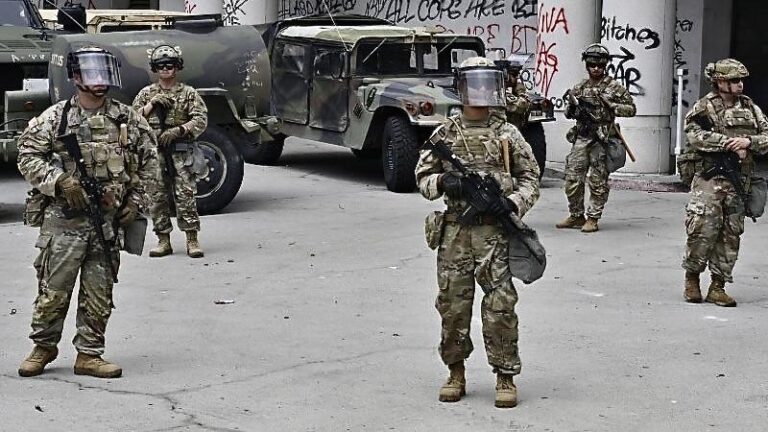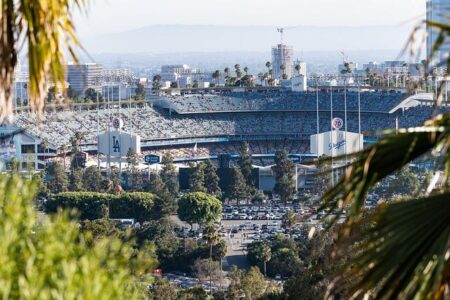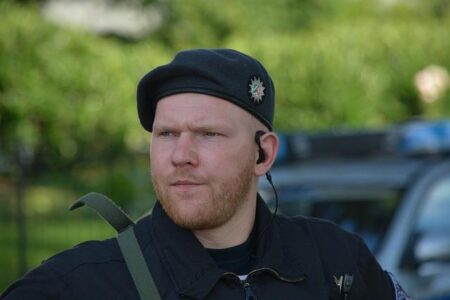Military Support Arrives in Los Angeles Amid Intensifying ICE Demonstrations
Nearly 700 U.S. Marines have been dispatched to the Los Angeles region in response to growing protests against Immigration and Customs Enforcement (ICE) activities. This deployment is intended to bolster local law enforcement efforts to maintain order and protect federal properties as demonstrations increase in size and intensity. The protests, driven by community opposition to immigration enforcement methods, have occasionally led to clashes, prompting federal agencies to request additional military support.
In reaction, California Governor Gavin Newsom has initiated legal proceedings to halt the military deployment, arguing that it infringes upon state authority and risks escalating tensions. Below is an overview of the current developments:
| Key Element | Information |
|---|---|
| Marine Personnel | Approximately 700 troops deployed |
| Mission Objective | Assist law enforcement during protests |
| Governor’s Response | Legal challenge filed to block deployment |
| Protest Focus | Opposition to ICE enforcement strategies |
| Federal Measures | Enhanced security and resource deployment |
- Federal authorities stress the necessity of a unified approach to prevent violence and property damage.
- Community advocates raise concerns about the militarization of policing and potential civil rights violations.
- Legal disputes continue to highlight the friction between state governance and federal enforcement priorities.
Governor Newsom Challenges Federal Military Presence in California Through Legal Action
Governor Gavin Newsom has taken a firm legal stance against the federal government’s plan to deploy military forces in California amid escalating ICE-related protests. The lawsuit aims to prevent the Pentagon from authorizing the use of approximately 700 Marines stationed in the Los Angeles area, citing concerns over the militarization of civil unrest and infringement on state jurisdiction. Newsom advocates for local law enforcement to lead public safety efforts without federal military intervention.
This military deployment arrives during a period of heightened demonstrations against immigration enforcement policies, sparking significant debate. Critics warn that the presence of military personnel could exacerbate tensions rather than calm the situation. Key issues raised by California officials include:
- State Authority: Upholding California’s control over public safety operations.
- Protection of Civil Rights: Guarding against potential misuse of power during protests.
- Community Relations: Maintaining trust between residents and law enforcement agencies.
- Opposition to Militarization: Resisting the use of military forces for domestic policing roles.
| Issue | Federal Perspective | California’s Position |
|---|---|---|
| Purpose of Deployment | Support ICE enforcement activities | Ensure civil order through local law enforcement |
| Legal Justification | Federal authority over national defense and security | State sovereignty and protection of civil liberties |
| Anticipated Result | Strengthened federal enforcement capabilities | Peaceful protests without military involvement |
Effects of Military Deployment on Local Communities and Immigration Protests
The introduction of 700 Marines into the Los Angeles area has created a complex interplay between military forces and local populations amid ongoing immigration protests. Many residents and activists express apprehension about the increased military presence, fearing it may disrupt community cohesion and escalate tensions. The deployment is perceived by some as an aggressive posture toward immigrant communities, intensifying the already charged atmosphere surrounding ICE demonstrations. These protests,while largely peaceful,have occasionally seen confrontations that reflect deep societal divisions over immigration enforcement.
Community reactions include:
- Calls for enhanced interaction among local officials, military representatives, and immigrant rights organizations.
- Formation of neighborhood safety initiatives to monitor and protect public spaces during large protests.
- Efforts to document and report incidents perhaps linked to the military’s presence.
| Group | Main Concern | View on Military Presence |
|---|---|---|
| Local Residents | Safety and community stability | Mixed feelings, cautious optimism |
| Immigrant Rights Advocates | Protection of human rights and due process | Strong opposition to military deployment |
| Local Government Officials | Balancing law enforcement and civil liberties | Diverse opinions, some support, some concern |
Strategies for Balancing Security and Civil Rights During Protests
Open communication and cooperation among law enforcement, protest organizers, and community leaders are essential to protect civil liberties while ensuring public safety. Authorities should prioritize de-escalation techniques and cultural competency training for all personnel involved, notably in sensitive environments like the recent ICE protests in Los Angeles. Establishing clear protocols that respect peaceful assembly and free speech can help minimize unnecessary conflicts and build community trust.
Additionally, stakeholders must implement robust accountability frameworks and independent oversight to monitor conduct during demonstrations.Creating accessible channels for reporting misconduct and promptly addressing complaints will enhance public confidence. The use of technology such as body-worn cameras and live-streaming can offer clear documentation of interactions, balancing security needs with the protection of civil rights.
| Stakeholder | Recommended Measures | Anticipated Benefits |
|---|---|---|
| Law Enforcement | Implement de-escalation training and utilize body cameras | Lower risk of violence and greater transparency |
| Community Leaders | Promote dialog between protesters and authorities | Improved mutual understanding and cooperation |
| Policy Makers | Pass laws safeguarding protest rights and oversight | Stronger legal protections for civil liberties |
Conclusion
The deployment of 700 Marines to the Los Angeles area amid ongoing ICE protests has intensified the conflict between state and federal authorities. Governor Gavin Newsom’s legal challenge to block the military presence highlights the profound political and legal disputes surrounding immigration enforcement in California. This situation has become a pivotal issue in the broader national conversation about border security, state sovereignty, and civil rights. Both sides appear prepared for a protracted legal and public relations contest as the events continue to unfold. Updates will be provided as new developments arise.




